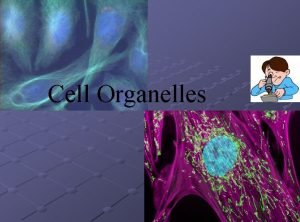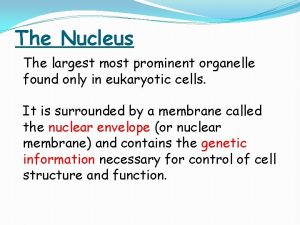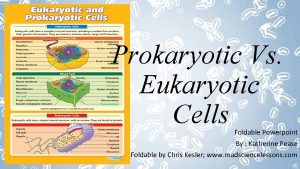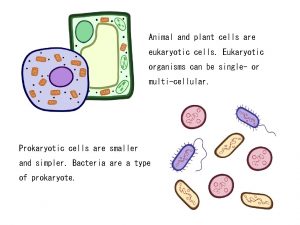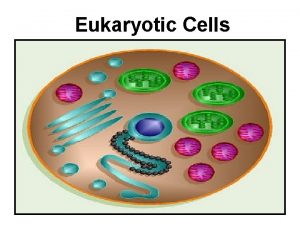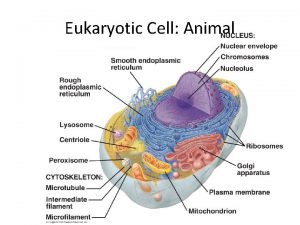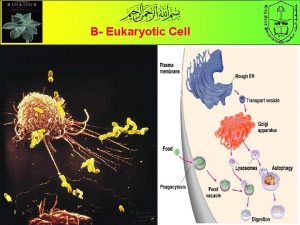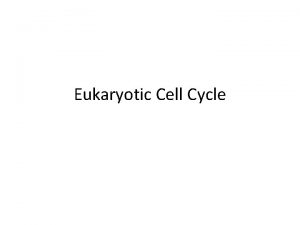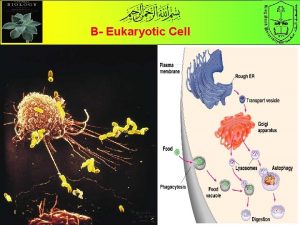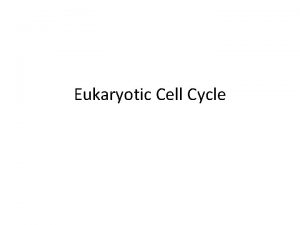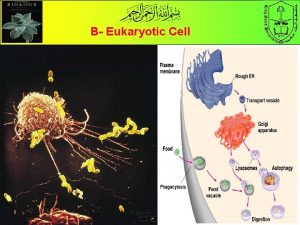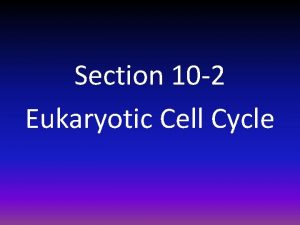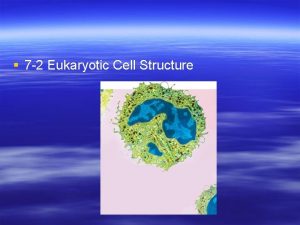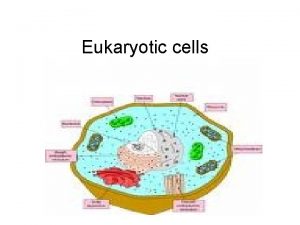ANIMAL CELL Animal cells are eukaryotic cells or















- Slides: 15

ANIMAL CELL

Animal cells are eukaryotic cells, or cells with a membrane -bound nucleus. Unlike prokaryotic cells, DNA in animal cells is housed within the nucleus. In addition to having a nucleus, animal cells also contain other membrane-bound organelles, or tiny cellular structures, that carry out specific functions necessary for normal cellular operation. Organelles have a wide range of responsibilities that include everything from producing hormones and enzymes to providing energy for animal cells.

Animal Cell

Cell Membrane The cell membrane is a biological membrane that separates the interior of all cells from the outside environment. The cell membrane is selectively permeable to ions and organic molecules and controls the movement of substances in and out of cells. It basically protects the cell from outside forces. It consists of the lipid bilayer with embedded proteins.

Fungi, bacteria and plants also have the cell wall which provides a mechanical support for the cell and precludes the passage of larger molecules. The cell membrane also plays a role in anchoring the cytoskeleton to provide shape to the cell, and in attaching to the extracellular matrix and other cells to help group cells together to form tissues.

Cytoplasm The cytoplasm is the gel-like substance residing between the cell membrane holding all the cell's internal sub-structures (organelles), except for the nucleus. All the contents of the cells of prokaryote organisms are contained within the cytoplasm. It is within the cytoplasm that most cellular activities occur, such as many metabolic pathways including glycolysis, and processes such as cell division.

The main function of the cytoplasm is to hold the cell organelles of the cell. Cell organelles are basically components of the cell which control all the activities of the cell. For example, mitochondria are cell organelles which control almost all of the cell's metabolic activities.

Necleus In cell biology, the nucleus is a membrane-enclosed organelle found in eukaryotic cells. It contains most of the cell's genetic material, organized as multiple long linear DNA molecules in complex with a large variety of proteins, such as histones, to form chromosomes.

The main function of the cell nucleus is to control gene expression and mediate the replication of DNA during the cell cycle. The nucleus provides a site for genetic transcription that is segregated from the location of translation in the cytoplasm, allowing levels of gene regulation that are not available to prokaryotes.

ENDOPLASMIC RETICULUM The endoplasmic reticulum (ER) is an organelle of cells in eukaryotic organisms that forms an interconnected network of tubules, vesicles, and cisternae. The general structure of an endoplasmic reticulum is a membranous network of cisternae (sac-like structures) held together by the cytoskeleton. The endoplasmic reticulum serves many general functions, including the facilitation of protein folding and the transport of synthesized proteins in sacs called cisternae.

Golgi Apparatus The Golgi apparatus, is an organelle found in most eukaryotic cells. It was identified in 1898 by the Italian physician Camillo Golgi and named after him. Part of the cellular endomembrane system, the Golgi apparatus packages proteins inside the cell before they are sent to their destination; it is particularly important in the processing of proteins for secretion. It synthesise a large number of different macromolecules.

The Golgi apparatus is integral in modifying, sorting, and packaging these macromolecules for cell secretion or use within the cell. It primarily modifies proteins delivered from the rough endoplasmic reticulum but is also involved in the transport of lipids around the cell, and the creation of lysosomes. In this respect it can be thought of as similar to a post office; it packages and labels items which it then sends to different parts of the cell.

Lysosomes are cellular organelles that contain acid hydrolase enzymes to break down waste materials and cellular debris. They can be described as the stomach of the cell. They are found in animal cells, while their existence in yeasts and plants are disputed.

Lysosomes function as the digestive system of the cell, serving both to degrade material taken up from outside the cell and to digest obsolete components of the cell itself. In their simplest form, lysosomes are visualized as dense spherical vacuoles, but they can display considerable variation in size and shape as a result of differences in the materials that have been taken up for digestion.

Mitochondria In cell biology, a mitochondrion is a membraneenclosed organelle found in most eukaryotic cells. These organelles range from 0. 5 to 1. 0 micrometre in diameter. The most prominent roles of mitochondria are to produce the energy currency of the cell ATP , through respiration, and to regulate cellular metabolism. The central set of reactions involved in ATP production are collectively known as the citric acid cycle, or the Krebs Cycle. However, the mitochondrion has many other functions in addition to the production of ATP.
 Eukaryotic cell animal cell
Eukaryotic cell animal cell Mikael ferm
Mikael ferm Eukaryotic cells vs prokaryotic
Eukaryotic cells vs prokaryotic Prokaryotic vs eukaryotic cells venn diagram
Prokaryotic vs eukaryotic cells venn diagram Are plant cells prokaryotic or eukaryotic
Are plant cells prokaryotic or eukaryotic Prokaryotic cells
Prokaryotic cells Site:slidetodoc.com
Site:slidetodoc.com Prokaryotic cell and eukaryotic cell similarities
Prokaryotic cell and eukaryotic cell similarities Prokaryotic cell and eukaryotic cell
Prokaryotic cell and eukaryotic cell Is animal cell prokaryotic or eukaryotic
Is animal cell prokaryotic or eukaryotic Animal rights and animal welfare venn diagram
Animal rights and animal welfare venn diagram Most prominent organelle in eukaryotic cells
Most prominent organelle in eukaryotic cells Eukaryotic cells
Eukaryotic cells 3 parts of cell theory
3 parts of cell theory Diff between prokaryotes and eukaryotes
Diff between prokaryotes and eukaryotes Similarity between prokaryotic and eukaryotic cells
Similarity between prokaryotic and eukaryotic cells









